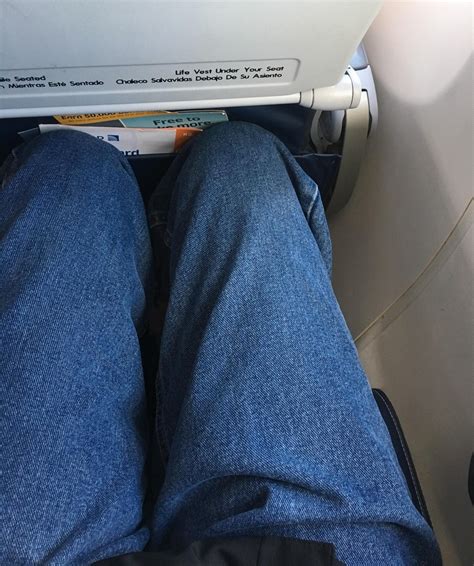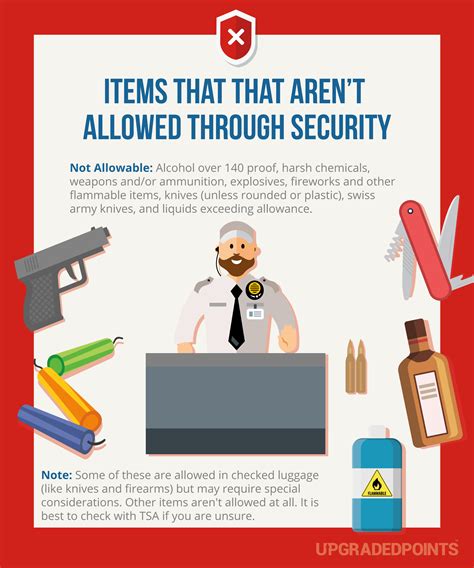
Airline passengers who aggressively recline their seats during flights could now face fines and other penalties, depending on the severity and disruptive nature of their actions, as airlines crack down on in-flight disturbances.
Aggressive seat reclining incidents, often resulting in confrontations between passengers, have prompted airlines to take a stricter stance, potentially leading to fines, being banned from future flights, or even facing legal consequences for disruptive behavior. According to a recent report, airlines are increasingly intolerant of actions that create uncomfortable or unsafe environments for other passengers and crew members.
“Federal law prohibits passengers from assaulting, threatening, intimidating, or interfering with the duties of a crew member,” according to the Federal Aviation Administration (FAA). However, the FAA doesn’t have specific regulations about reclining seats and passenger etiquette. The policies are generally determined by individual airlines.
The rise in passenger altercations, fueled by shrinking legroom and increased flight density, has pushed airlines to address passenger behavior more proactively. While the act of reclining a seat is generally permitted, doing so abruptly or without consideration for the passenger behind can now be considered a violation of airline policies regarding passenger conduct.
Airlines often address this issue through their Conditions of Carriage, which outline acceptable passenger behavior. Violations of these conditions can result in a range of penalties.
Seat Reclining: A Contentious Issue
The issue of seat reclining has been a long-standing source of tension among airline passengers. As airlines strive to maximize passenger capacity, legroom has steadily decreased, making the impact of seat reclining more pronounced and potentially intrusive. This reduction in personal space has exacerbated disagreements, leading to an increase in incidents reported both anecdotally and through official channels.
Many passengers feel entitled to recline their seats, viewing it as a standard feature and a reasonable expectation for comfort, especially on long flights. However, others argue that reclining significantly infringes on the space of the passenger behind them, making it difficult to work, eat, or even comfortably sit.
The debate often escalates into confrontations when passengers disagree on the appropriateness of reclining, especially if one passenger is particularly tall, working on a laptop, or has limited mobility. Instances of passengers using “knee defenders” (devices to prevent reclining) or engaging in verbal altercations have become increasingly common, highlighting the need for clear guidelines and enforcement mechanisms.
Airline Responses and Policies
Airlines generally permit seat reclining, but with an implicit understanding that it should be done courteously and without causing undue disturbance. Most airlines do not have specific rules about how far a seat can be reclined or when it is permissible to do so. Instead, they rely on general clauses in their Conditions of Carriage that prohibit disruptive or offensive behavior.
However, the increasing frequency of reclining-related incidents has prompted some airlines to re-evaluate their approach. While a complete ban on reclining is unlikely due to the perceived passenger entitlement and design of aircraft seats, airlines are focusing on enforcing existing rules regarding passenger conduct and empowering flight crews to intervene in disputes.
Flight attendants are trained to mediate conflicts and ensure passenger safety and comfort. When a reclining-related dispute arises, they are typically the first line of intervention, attempting to de-escalate the situation and find a compromise that satisfies both passengers. However, if a passenger becomes belligerent or refuses to comply with crew instructions, more severe measures may be taken.
Potential Penalties for Disruptive Reclining
The penalties for disruptive behavior, including aggressive or inconsiderate seat reclining, can vary depending on the airline, the severity of the incident, and the applicable regulations.
Here’s a breakdown of potential consequences:
- Verbal Warning: In most cases, the initial response to a reclining-related dispute is a verbal warning from a flight attendant. This warning serves to inform the passenger that their behavior is unacceptable and to encourage them to modify their actions.
- Written Warning: If the disruptive behavior persists despite a verbal warning, the flight attendant may issue a written warning. This warning is documented and becomes part of the passenger’s record with the airline.
- Fines: Airlines have the authority to impose fines on passengers who violate their Conditions of Carriage. The amount of the fine can vary depending on the severity of the infraction, but it can range from a few hundred to several thousand dollars. The article source suggests this is a new development, highlighting a more stringent approach to passenger behavior.
- Removal from Flight: If a passenger’s behavior poses a threat to the safety or comfort of other passengers or crew members, the airline may remove them from the flight. This can occur at the departure airport or at an intermediate stop. The passenger may also be responsible for any costs associated with their removal, such as rebooking fees or accommodation expenses.
- Banning from Future Flights: Airlines can ban passengers from flying with them in the future if they have engaged in serious misconduct. This ban can be temporary or permanent, depending on the severity of the offense.
- Legal Consequences: In extreme cases, disruptive passengers may face legal charges. Federal law prohibits interference with flight crew duties, and passengers who assault, threaten, or intimidate crew members can be arrested and prosecuted. Additionally, passengers who damage airline property or injure other passengers may be subject to civil lawsuits.
Federal Aviation Regulations and Passenger Conduct
The FAA has the authority to regulate passenger conduct on commercial flights. While the FAA does not have specific regulations addressing seat reclining, it does have broad rules prohibiting disruptive or dangerous behavior.
According to FAA regulations, passengers are prohibited from:
- Interfering with the duties of a crew member
- Assaulting, threatening, or intimidating crew members or other passengers
- Consuming alcohol that was not served by the airline
- Smoking in the lavatories or other prohibited areas
- Tampering with aircraft equipment
- Violating safety regulations
Passengers who violate these regulations can face civil penalties, including fines, and in some cases, criminal charges.
Passengers’ Responsibilities and Rights
While airlines have the right to enforce their Conditions of Carriage and maintain order on flights, passengers also have certain rights. These rights include the right to:
- Be treated with respect and courtesy by airline staff
- Receive prompt and accurate information about flight delays or cancellations
- Be compensated for lost or damaged baggage
- Receive a refund for unused tickets in certain circumstances
- File a complaint with the airline or the Department of Transportation if they believe their rights have been violated
Passengers also have a responsibility to behave respectfully and responsibly on flights, to follow crew instructions, and to avoid engaging in behavior that could endanger or inconvenience other passengers.
Alternative Solutions and Etiquette Tips
To mitigate the conflict surrounding seat reclining, several alternative solutions and etiquette tips have been proposed:
- Limited Reclining: Some airlines have considered limiting the degree to which seats can recline, or even installing seats that do not recline at all. This would eliminate the potential for conflict, but it could also reduce passenger comfort.
- Reclining Etiquette: Passengers are encouraged to recline their seats slowly and cautiously, checking to ensure that they are not unduly inconveniencing the passenger behind them. They should also avoid reclining during meal service or when the passenger behind them is working on a laptop.
- Communication: Passengers are encouraged to communicate with each other respectfully and to attempt to resolve any disputes amicably. If a passenger is uncomfortable with the position of the seat in front of them, they should politely ask the passenger to adjust it.
- Airline Intervention: Flight attendants should be trained to effectively mediate reclining-related disputes and to ensure that both passengers are treated fairly. They should also be empowered to take appropriate action if a passenger becomes disruptive or refuses to comply with crew instructions.
The Future of Seat Reclining
The issue of seat reclining is likely to remain a contentious one for the foreseeable future. As airlines continue to pack more passengers into aircraft cabins, the potential for conflict over personal space will only increase.
However, by implementing clear guidelines, enforcing existing rules, and encouraging respectful communication, airlines can help to mitigate the negative impacts of seat reclining and create a more comfortable and enjoyable flying experience for all passengers. The introduction of potential fines, as suggested in the article source, signals a more serious and proactive approach by airlines in addressing these issues.
Ultimately, a combination of airline policies, passenger etiquette, and effective conflict resolution will be necessary to address the challenges posed by seat reclining and to ensure that air travel remains a safe and pleasant experience for everyone.
In-Depth Analysis
The escalating tensions surrounding seat reclining are symptomatic of broader issues within the airline industry, including the drive for increased profitability and the resulting reduction in passenger comfort. As airlines seek to maximize revenue, they often prioritize seating density over passenger space, leading to cramped conditions and increased friction between travelers.
The issue is not simply about the act of reclining itself but also about the perceived lack of consideration for others. In a confined space, even a small adjustment to a seat can have a significant impact on the person behind. This is particularly true for taller individuals or those with mobility issues who may already be struggling to find comfortable positions.
The introduction of potential fines for disruptive reclining represents a significant shift in how airlines are addressing passenger behavior. Previously, airlines often relied on verbal warnings or, in more extreme cases, removing passengers from flights. However, the threat of financial penalties may serve as a more effective deterrent, discouraging passengers from engaging in aggressive or inconsiderate behavior.
The effectiveness of these fines will depend on several factors, including the clarity of airline policies, the consistency of enforcement, and the level of awareness among passengers. Airlines will need to clearly communicate their expectations regarding seat reclining and ensure that flight crews are properly trained to identify and address violations.
Furthermore, the fines must be proportionate to the offense and applied fairly to all passengers. Arbitrary or discriminatory enforcement could lead to legal challenges and further erode passenger trust.
Background Information
The history of seat reclining in commercial aviation dates back to the early days of air travel. As aircraft became larger and capable of flying longer distances, airlines began to introduce features designed to enhance passenger comfort, including reclining seats.
In the past, when legroom was more generous, seat reclining was generally not a source of contention. However, as airlines have reduced seat pitch (the distance between rows of seats) to increase capacity, the impact of reclining has become more pronounced.
The average seat pitch in economy class has decreased from around 35 inches in the 1970s to as little as 30 inches on some airlines today. This reduction in space has made it more difficult for passengers to comfortably accommodate a reclined seat in front of them.
The issue of seat reclining has also been exacerbated by the increasing prevalence of electronic devices. Many passengers now rely on laptops or tablets for work or entertainment during flights, and a reclined seat can make it difficult or impossible to use these devices comfortably.
Expanded Context
The debate over seat reclining is part of a larger discussion about the overall passenger experience in air travel. Airlines are facing increasing pressure to improve customer satisfaction, but they are also under pressure to control costs.
This has led to a complex balancing act, with airlines trying to find ways to enhance the passenger experience without sacrificing profitability. Some airlines have invested in new seating designs that provide more legroom or offer alternative reclining mechanisms. Others have focused on improving in-flight entertainment or offering more personalized service.
However, many passengers feel that airlines are still prioritizing profits over comfort, and that the overall flying experience has deteriorated in recent years. The issue of seat reclining is just one example of how the pursuit of efficiency can sometimes come at the expense of passenger well-being.
The airline industry is also facing increasing scrutiny from regulators and consumer advocacy groups. There have been calls for stricter regulations on seat pitch and other passenger amenities, as well as increased transparency in airline pricing and fees.
The future of air travel will likely involve a combination of technological innovation, regulatory oversight, and changing consumer expectations. Airlines that are able to adapt to these changes and prioritize passenger comfort and satisfaction will be best positioned for long-term success. The introduction of fines for disruptive reclining suggests a move towards greater enforcement of passenger conduct rules, potentially setting a new standard for in-flight behavior.
Frequently Asked Questions (FAQ)
1. Can I really get fined for reclining my seat on a plane?
Yes, according to recent reports, airlines are increasingly willing to fine passengers for disruptive behavior, which can include aggressively or inconsiderately reclining their seats. The key factor is whether your actions are deemed to be interfering with the comfort or safety of other passengers or the duties of the crew. While reclining is generally permitted, doing so in a way that causes a disturbance could lead to a fine.
2. What constitutes “aggressive” or “inconsiderate” reclining?
There isn’t a precise legal definition, but “aggressive” reclining generally refers to reclining the seat abruptly or forcefully without regard for the passenger behind you. “Inconsiderate” reclining may involve reclining fully when the passenger behind is eating, working on a laptop, or is visibly uncomfortable. Communication and awareness are key. Reclining slowly and cautiously, and being responsive to the needs of the person behind you, can help avoid issues.
3. What other penalties could I face besides a fine for disruptive reclining?
Besides a fine, you could receive a verbal or written warning from a flight attendant. More serious consequences include being removed from the flight at the next available airport, being banned from future flights with the airline, or even facing legal charges if your behavior is deemed to be interfering with the flight crew or endangering other passengers.
4. Does the FAA have rules about reclining seats?
No, the FAA does not have specific regulations regarding reclining seats. However, they do have regulations prohibiting disruptive or dangerous behavior on flights, which could encompass extreme cases of reclining-related incidents. The FAA focuses on ensuring passenger safety and preventing interference with the flight crew. Airlines are responsible for setting their own policies regarding seat reclining within those broader safety guidelines.
5. What can I do if the person in front of me reclines their seat and it’s making me uncomfortable?
The best approach is to communicate politely with the passenger in front of you. Explain your situation calmly and respectfully. For example, you could say, “Excuse me, would you mind adjusting your seat slightly? I’m trying to work on my laptop and it’s a bit difficult.” If the passenger is unwilling to cooperate, you can ask a flight attendant to mediate the situation. Flight attendants are trained to handle these types of disputes and can often find a compromise that satisfies both passengers.









